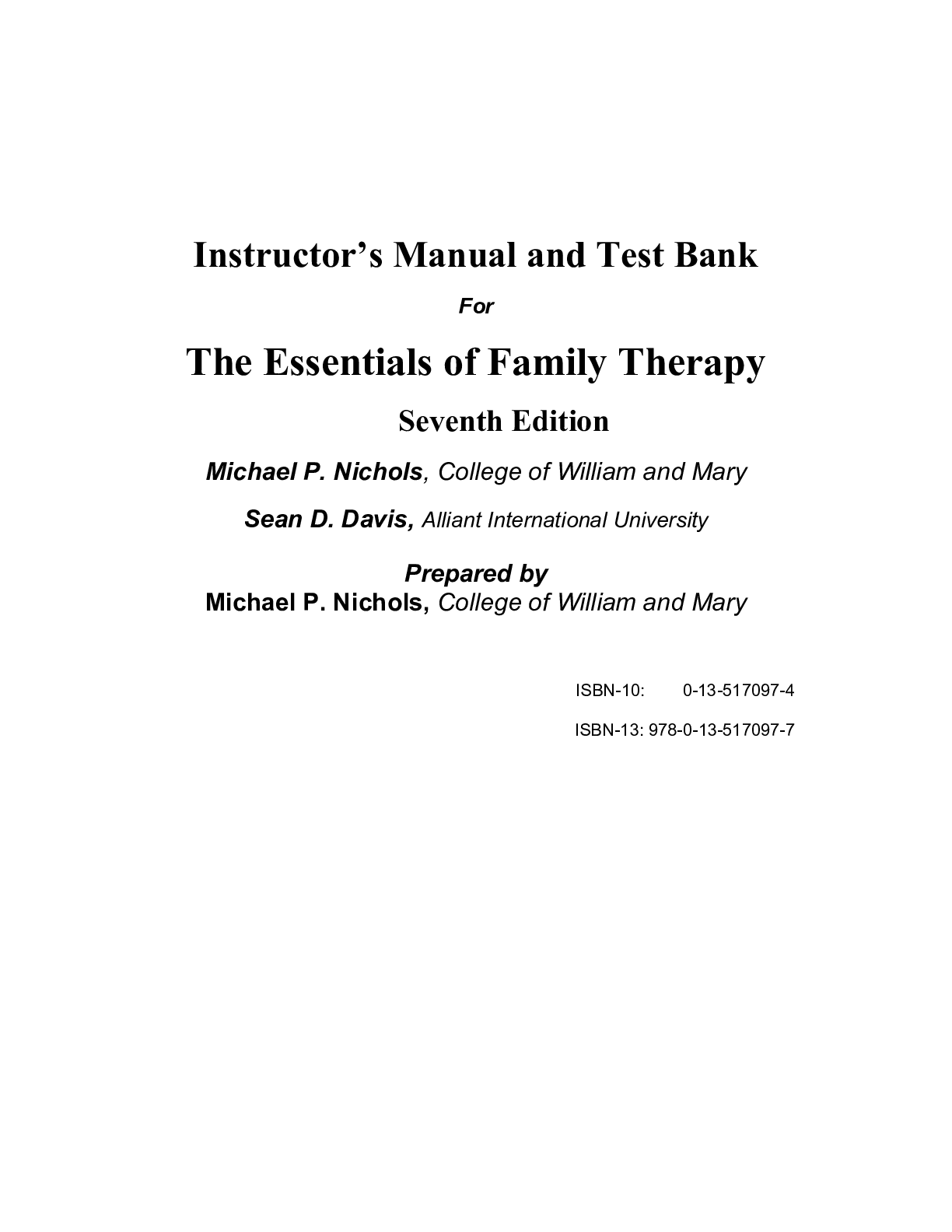Health Care > EXAM > HEALTH ASSESSMENT FOR NURSING PRACTICE 7TH EDITION BY SUSAN FICKERTT WILSON, JEAN FORET GIDDENS CHAP (All)
HEALTH ASSESSMENT FOR NURSING PRACTICE 7TH EDITION BY SUSAN FICKERTT WILSON, JEAN FORET GIDDENS CHAPTER 1-24 QUESTIONS WITH ANSWERS [TEST BANK]
Document Content and Description Below
HEALTH ASSESSMENT FOR NURSING PRACTICE 7TH EDITION BY SUSAN FICKERTT WILSON, JEAN FORET GIDDENS CHAPTER 1-24 QUESTIONS WITH ANSWERS [TEST BANK] Chapter 01: Introduction to Health Assessment Wil... son: Health Assessment for Nursing Practice, 7th Edition MULTIPLE CHOICE 1. A patient comes to the emergency department and tells the triage nurse that he is “having a heart attack.” What is the nurse’s top priority at this time? a. Determine the patient’s personal data and insurance coverage. b. Ask the patient to take a seat in the waiting room until his name is called. c. Request that a nurse collect data for a comprehensive history. d. Ask a nurse to start a focused assessment of this patient now. ANS: D The nurse needs to begin an assessment as soon as possible that is focused on this patient’s cardiovascular system. The type of health assessment performed by the nurse is also driven by patient need. Personal data and insurance information will be obtained, but in this situation, these data can wait until after the patient is assessed. Based also on Maslow’s hierarchy of needs, physiologic needs take precedence. Rather than asking the patient to wait, the nurse needs to begin data collection, such as vital signs, immediately to determine the patient’s health status. Complications can be prevented if an immediate assessment is made to analyze the patient’s symptoms. A comprehensive history is not indicated in this situation at this time. Some subjective data will be collected, such as allergies and medical history related to cardiovascular disease. Eyes, ears, or a complete musculoskeletal or mental health assessment is not a priority at this time. DIF: Cognitive Level: Apply REF: Box 1-3 | p. 3 TOP: Nursing Process: Assessment MSC: NCLEX Patient Needs: Safe and Effective Care Environment: Management of Care: Establishing Priorities 2. Which situation illustrates a screening assessment? a. A patient visits an obstetric clinic for the first time and the nurse conducts a detailed history and physical examination. b. A hospital sponsors a health fair at a local mall and provides cholesterol and blood pressure checks to mall patrons. c. The nurse in an urgent care center checks the vital signs of a patient who is complaining of leg pain. d. A patient newly diagnosed with diabetes mellitus comes to test his fasting blood glucose level. ANS: B A health fair at a local mall that provides cholesterol and blood pressure checks is an example of a screening assessment focused on disease detection. A detailed history and physical examination conducted during a first-time visit to an obstetric clinic is an example of a comprehensive assessment. Assessing a patient complaining of leg pain in the triage area of an urgent care center is an example of a problem-based/focused assessment. A patient’s return appointment 1 month after today’s office visit to report fasting blood glucose levels is an example of an episodic or follow-up assessment. DIF: Cognitive Level: Understand REF: Box 1-3 | p. 3 TOP: Nursing Process: Assessment MSC: NCLEX Patient Needs: Health Promotion and Maintenance: Health Screening 3. For which person is a screening assessment indicated? a. The person who had abdominal surgery yesterday b. The person who is unaware of his high serum glucose levels c. The person who is being admitted to a long-term care facility d. The person who is beginning rehabilitation after a knee replacement ANS: B A screening assessment is performed for the purpose of disease detection. In this case this person may have diabetes mellitus. A shift assessment is most appropriate for the person who is recovering in the hospital from surgery. A comprehensive assessment is performed during admission to a facility to obtain a detailed history and complete physical examination. An episodic or follow-up assessment is performed after knee replacement to evaluate the outcome of the procedure. DIF: Cognitive Level: Understand REF: Box 1-3 | p. 3 TOP: Nursing Process: Assessment MSC: NCLEX Patient Needs: Safe and Effective Care Environment: Management of Care: Establishing Priorities 4. For which person is a shift assessment indicated? a. The person who had abdominal surgery yesterday b. The person who is unaware of his high serum glucose levels c. The person who is being admitted to a long-term care facility d. The person who is beginning rehabilitation after a knee replacement ANS: A A shift assessment is most appropriate for the person who is recovering in the hospital from surgery. A screening assessment is performed for the purpose of disease detection, in this case diabetes mellitus. A comprehensive assessment is performed during admission to a facility to obtain a detailed history and complete physical examination. An episodic or follow-up assessment is performed after knee replacement to evaluate the outcome of the procedure. DIF: Cognitive Level: Understand REF: Box 1-3 | p. 4 TOP: Nursing Process: Assessment MSC: NCLEX Patient Needs: Safe and Effective Care Environment: Management of Care: Establishing Priorities 5. For which person is a comprehensive assessment indicated? a. The person who had abdominal surgery yesterday b. The person who is unaware of his high serum glucose levels c. The person who is being admitted to a long-term care facility d. The person who is beginning rehabilitation after a knee replacement ANS: C A comprehensive assessment is performed during admission to a facility to obtain a detailed history and complete physical examination. A shift assessment is most appropriate for the person who is recovering in the hospital from surgery. A screening assessment is performed for the purpose of disease detection, in this case diabetes mellitus. An episodic or follow-up assessment is performed after knee replacement to evaluate the outcome of the procedure. DIF: Cognitive Level: Understand REF: Box 1-3 | p. 3 TOP: Nursing Process: Assessment MSC: NCLEX Patient Needs: Safe and Effective Care Environment: Management of Care: Establishing Priorities 6. For which person is an episodic or follow-up assessment indicated? a. The person who had abdominal surgery yesterday b. The person who is unaware of his high serum glucose levels c. The person who is being admitted to a long-term care facility d. The person who is beginning rehabilitation after a knee replacement ANS: D An episodic or follow-up assessment is performed after the knee replacement to evaluate the outcome of the procedure. A shift assessment is most appropriate for the person who is recovering in the hospital from surgery. A screening assessment is performed for the purpose of disease detection, in this case diabetes mellitus. A comprehensive assessment is performed during admission to a facility to obtain a detailed history and complete physical examination. DIF: Cognitive Level: Understand REF: Box 1-3 | p. 3 TOP: Nursing Process: Assessment MSC: NCLEX Patient Needs: Safe and Effective Care Environment: Management of Care: Establishing Priorities 7. Which is an example of data a nurse collects during a physical examination? a. The patient’s lack of hair and shiny skin over both shins b. The patient’s stated concern about lack of money for prescriptions c. The patient’s complaints of tingling sensations in the feet d. The patient’s mother’s statements that the patient is very nervous lately ANS: A The lack of hair and shiny skin over both shins are objective data or signs that are part of the physical examination. A patient’s concerns about lack of money are subjective data and are part of the health history. A patient’s complaints of tingling sensations in the feet are subjective data and are part of the health history. A patient’s family statements are considered secondary data, are subjective data, and are part of the health history. DIF: Cognitive Level: Apply REF: Box 1-3 | p. 3 TOP: Nursing Process: Assessment MSC: NCLEX Patient Needs: Physiologic Integrity: Reduction of Risk Potential: System Specific Assessments 8. The nurse documents which information in the patient’s history? a. The patient’s skin feels warm to the touch. b. The patient is scratching his arm. c. The patient’s temperature is 100° F. d. The patient complains of itching. ANS: D A patient’s complaint of itching is subjective information, which means it is a symptom and is documented in the history. The patient’s warm skin is objective information gathered by the nurse through palpation, is also a sign, and is documented in the physical examination. The patient’s scratching is objective information gathered by the nurse through observation, is also a sign, and is documented in the physical examination. The patient’s elevated temperature is objective information gathered by the nurse through measurement, is also a sign, and is documented in the physical examination. DIF: Cognitive Level: Apply REF: p. 1 | p. 2 and Box 1-2 TOP: Nursing Process: Assessment MSC: NCLEX Patient Needs: Safe and Effective Care Environment: Management of Care: Establishing Priorities 9. Which patient information does the nurse document in the patient’s physical assessment? a. Slurred speech b. Immunizations c. Smoking habit d. Allergies ANS: A Slurred speech should be noticed by the nurse and documented as objective data in the physical assessment. Data on immunizations are collected from the patient, are subjective, and documented in the history. A smoking habit is information that comes from the patient, making it subjective data that is documented in the history. Allergies are information that come from the patient, making it subjective data that is documented in the history. DIF: Cognitive Level: Apply REF: p. 1-2 and Box 1-2 TOP: Nursing Process: Assessment MSC: NCLEX Patient Needs: Safe and Effective Care Environment: Management of Care: Establishing Priorities 10. After collecting the data, the nurse begins data analysis with which action? a. Clustering data b. Documenting subjective data c. Reporting information to other health team members d. Documenting objective information ANS: A After collecting data, the nurse organizes or clusters the data so that the problems appear more clearly. To cluster data, the nurse interprets the assessment data collected. Documenting subjective data is necessary for the medical record, but does not provide analysis. Before reporting data to health team members, the nurse clusters and interprets data. Documenting objective data is necessary for the medical record, but does not provide analysis. DIF: Cognitive Level: Understand REF: p. 4 TOP: Nursing Process: Assessment MSC: NCLEX Patient Needs: Safe and Effective Care Environment: Management of Care: Establishing Priorities 11. Which activity illustrates the concept of primary prevention? a. Monthly breast self-examination b. Annual cervical (Papanicolaou test) examination c. Education about living with asthma d. Exercising three times a week ANS: D Exercising is an example of primary prevention that prevents disease from developing by maintaining a healthy lifestyle. Monthly breast self-examination is an example of secondary prevention and screening efforts to promote early detection of disease. Annual cervical (Papanicolaou test) examination is an example of secondary prevention and screening efforts to promote early detection of disease. Teaching a patient how to live with a chronic disease such as asthma is an example of tertiary prevention directed toward minimizing the disability from chronic disease and helping the patient maximize his or her health. DIF: Cognitive Level: Understand REF: Table 1-1 | p. 5-6 TOP: Nursing Process: Assessment MSC: NCLEX Patient Needs: Health Promotion and Maintenance: Health Promotion Programs 12. A nurse is teaching a patient how to manage chronic obstructive pulmonary disease (COPD). This intervention is an example of which level of health promotion? a. Primary prevention b. Secondary prevention c. Tertiary prevention d. Risk factor prevention ANS: C Teaching a patient how to live with a chronic disease is an example of tertiary prevention directed toward minimizing the disability from chronic disease and helping the patient maximize his or her health. The focus of primary prevention is to prevent a disease from developing by promoting a healthy lifestyle. Secondary prevention consists of efforts to promote early detection of disease. Risk factor prevention is part of primary prevention that focuses on preventing disease by managing risk factors. DIF: Cognitive Level: Understand REF: Table 1-1 | p. 5-6 TOP: Nursing Process: Assessment MSC: NCLEX Patient Needs: Health Promotion and Maintenance: Health Promotion Programs 13. Which activity illustrates the concept of secondary prevention? a. Annual mammogram b. Nutrition classes on low-fat cooking c. Education on living with diabetes mellitus d. Cardiac rehabilitation after coronary artery bypass surgery ANS: A A mammogram screens for breast cancer and is an example of secondary prevention to promote early detection of disease. Nutrition classes are an example of primary prevention to prevent a disease from developing by promoting a healthy lifestyle. Education about diabetes mellitus is an example of tertiary prevention directed toward minimizing the disability from chronic disease and helping the patient maximize his or her health. Cardiac rehabilitation after coronary artery bypass surgery is an example of tertiary prevention directed toward minimizing the disability from chronic disease and helping the patient maximize his or her health. DIF: Cognitive Level: Understand REF: Table 1-1 | p. 5-6 TOP: Nursing Process: Assessment MSC: NCLEX Patient Needs: Health Promotion and Maintenance: Health Promotion Programs 14. A community organization sponsors a health fair to increase awareness of colon cancer. At the health fair, colorectal cancer screening kits are distributed, and health care professionals answer questions, take blood pressure, and distribute literature. What level of health prevention is being implemented by this community organization? a. Primary b. Secondary c. Tertiary d. Risk factor ANS: B Secondary prevention consists of screening efforts to promote early detection of disease—in this scenario, colorectal cancer and hypertension. Primary prevention is focused on preventing disease from developing through the promotion of a healthy lifestyle. Tertiary prevention is directed toward minimizing the disability from chronic disease and helping the patient maximize his or her health. Risk factor prevention is part of primary prevention that focuses on preventing disease by managing risk factors. DIF: Cognitive Level: Apply REF: Table 1-1 | p. 5-6 TOP: Nursing Process: Assessment MSC: NCLEX Patient Needs: Health Promotion and Maintenance: Health Promotion Programs [Show More]
Last updated: 1 month ago
Preview 1 out of 300 pages
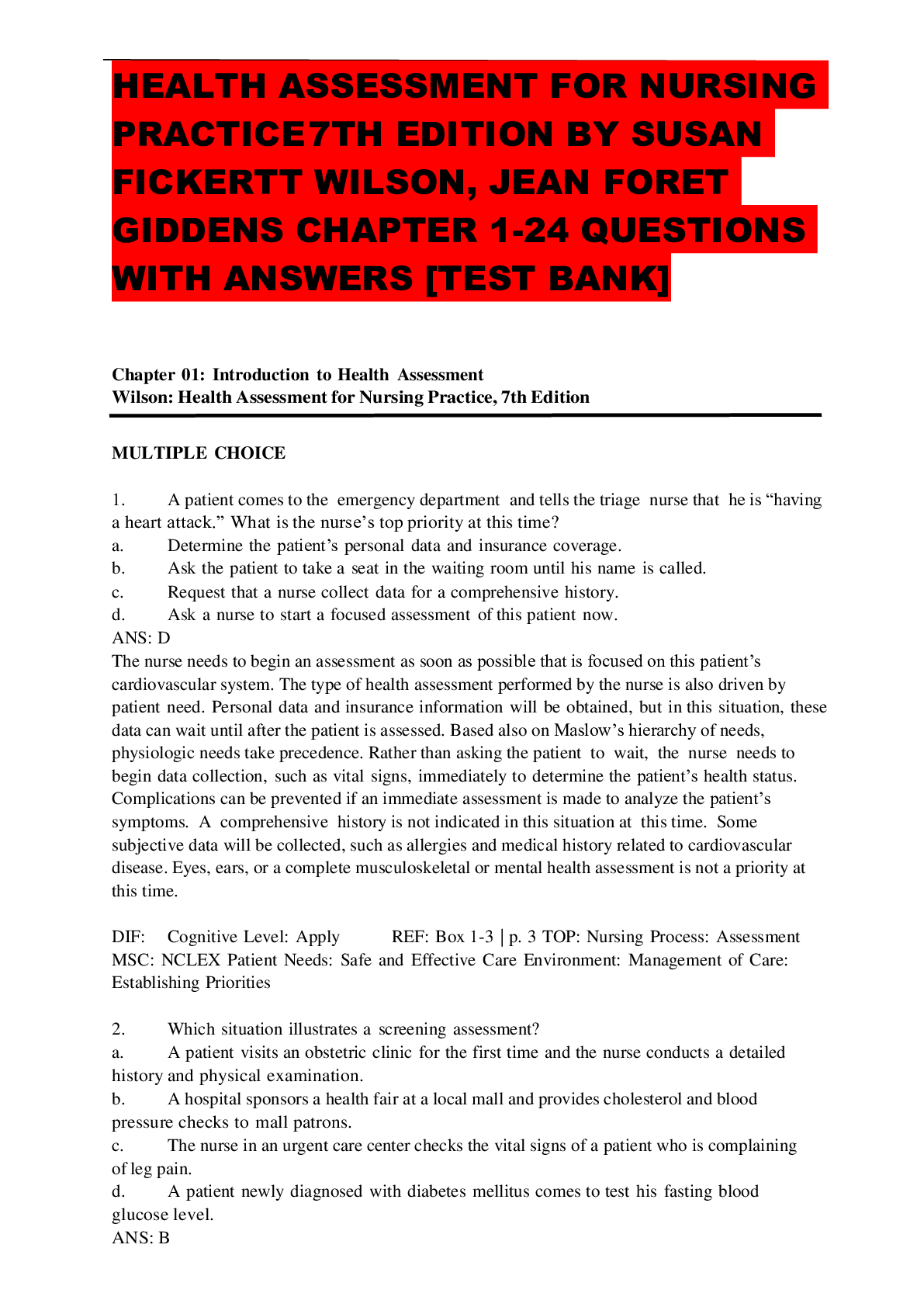
Reviews( 0 )
Document information
Connected school, study & course
About the document
Uploaded On
Apr 08, 2024
Number of pages
300
Written in
Additional information
This document has been written for:
Uploaded
Apr 08, 2024
Downloads
0
Views
13

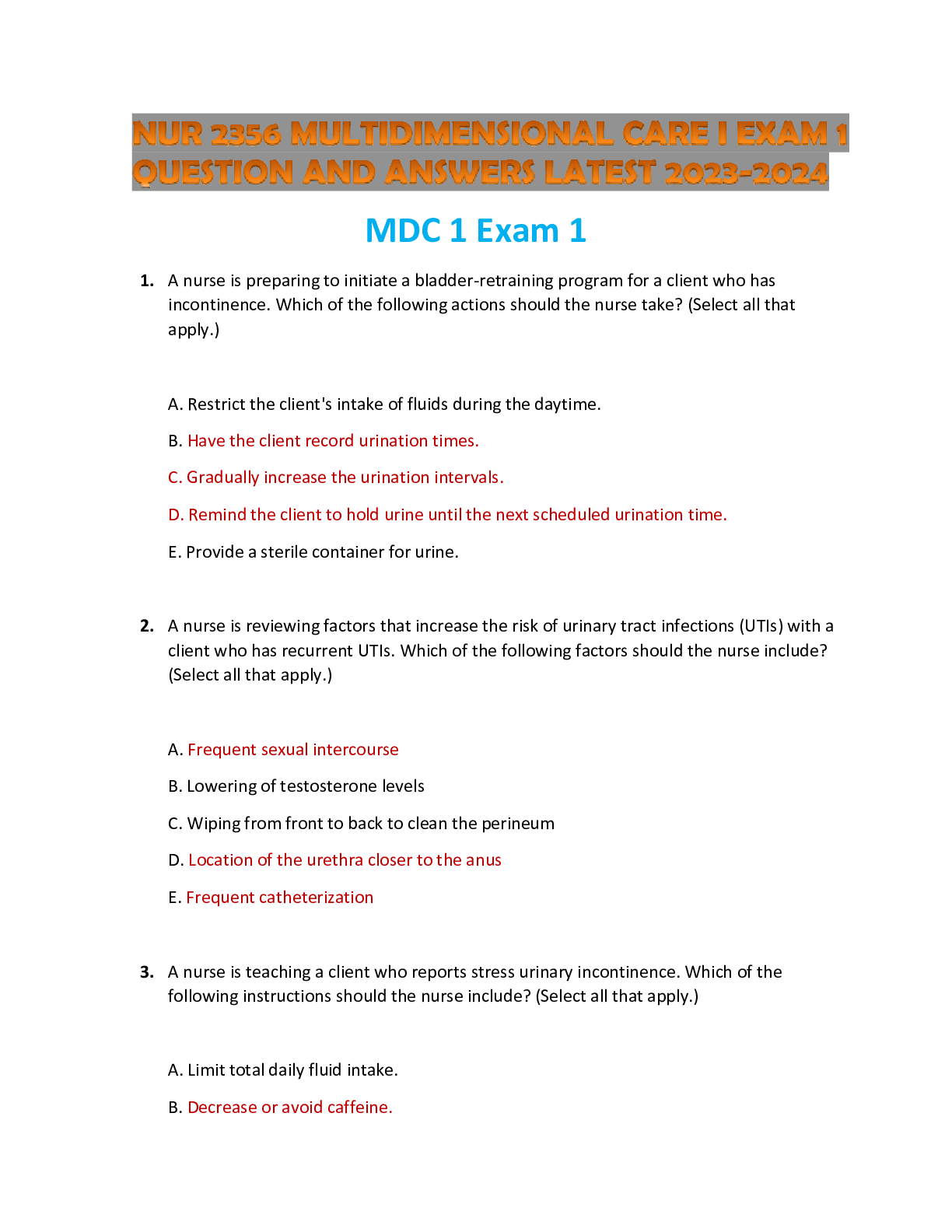
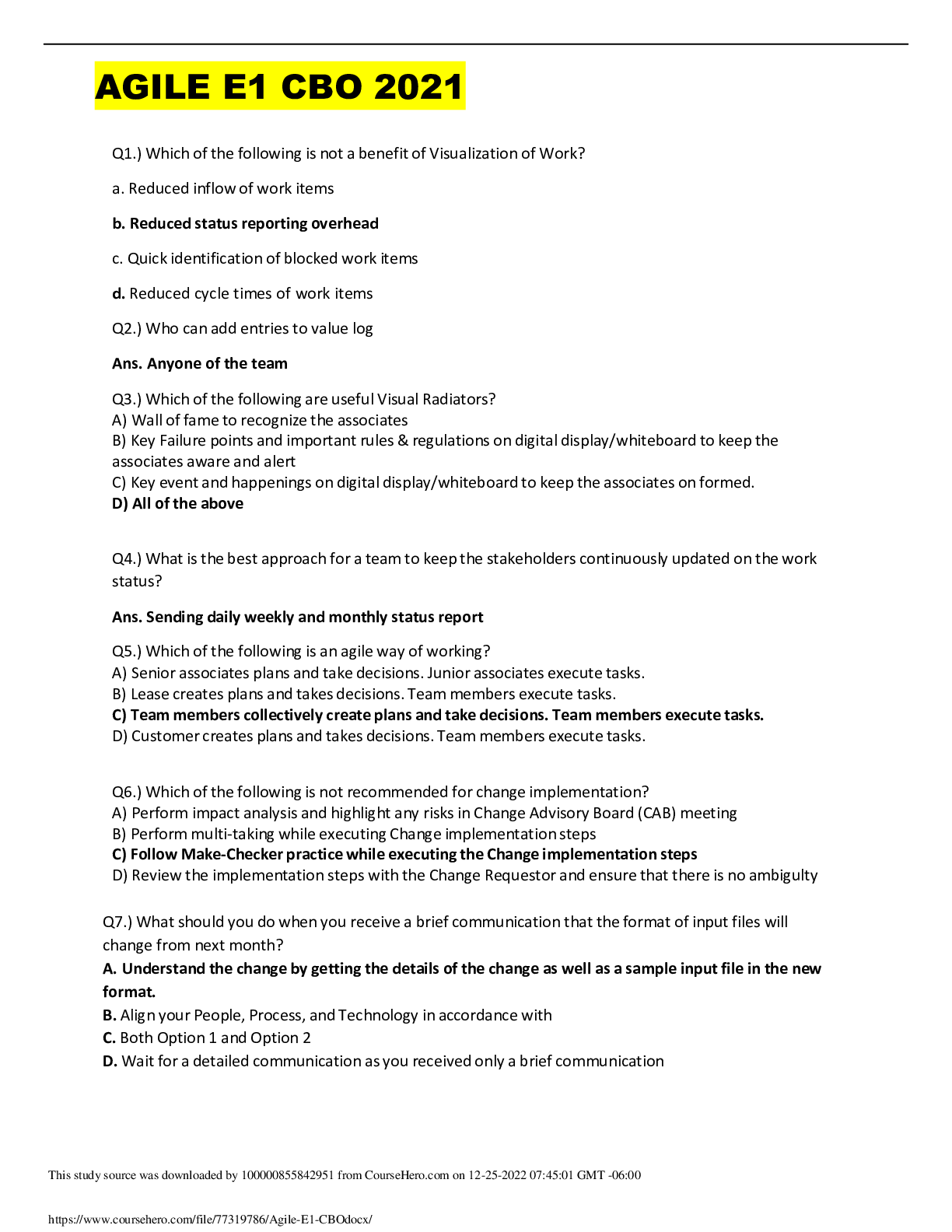
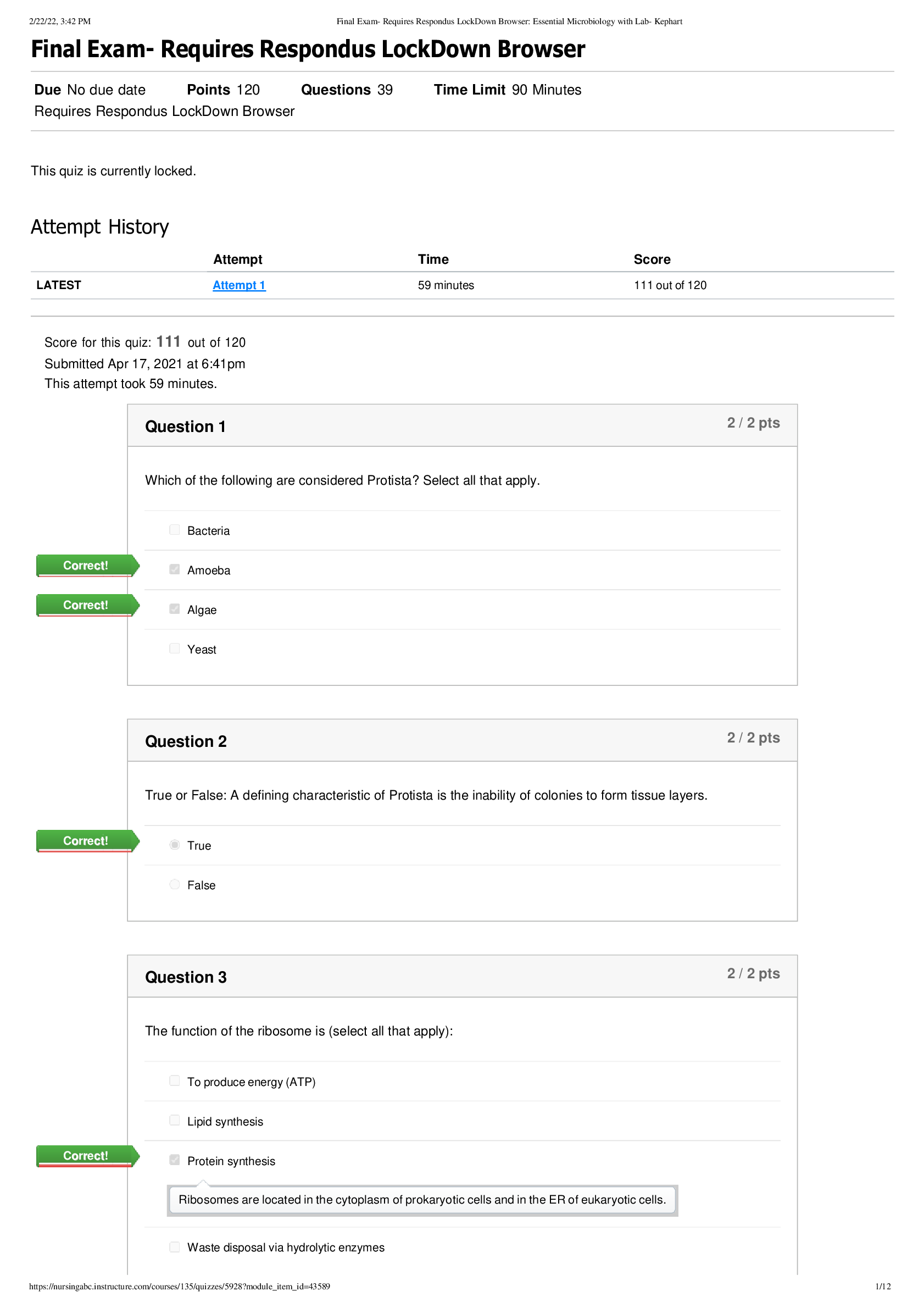

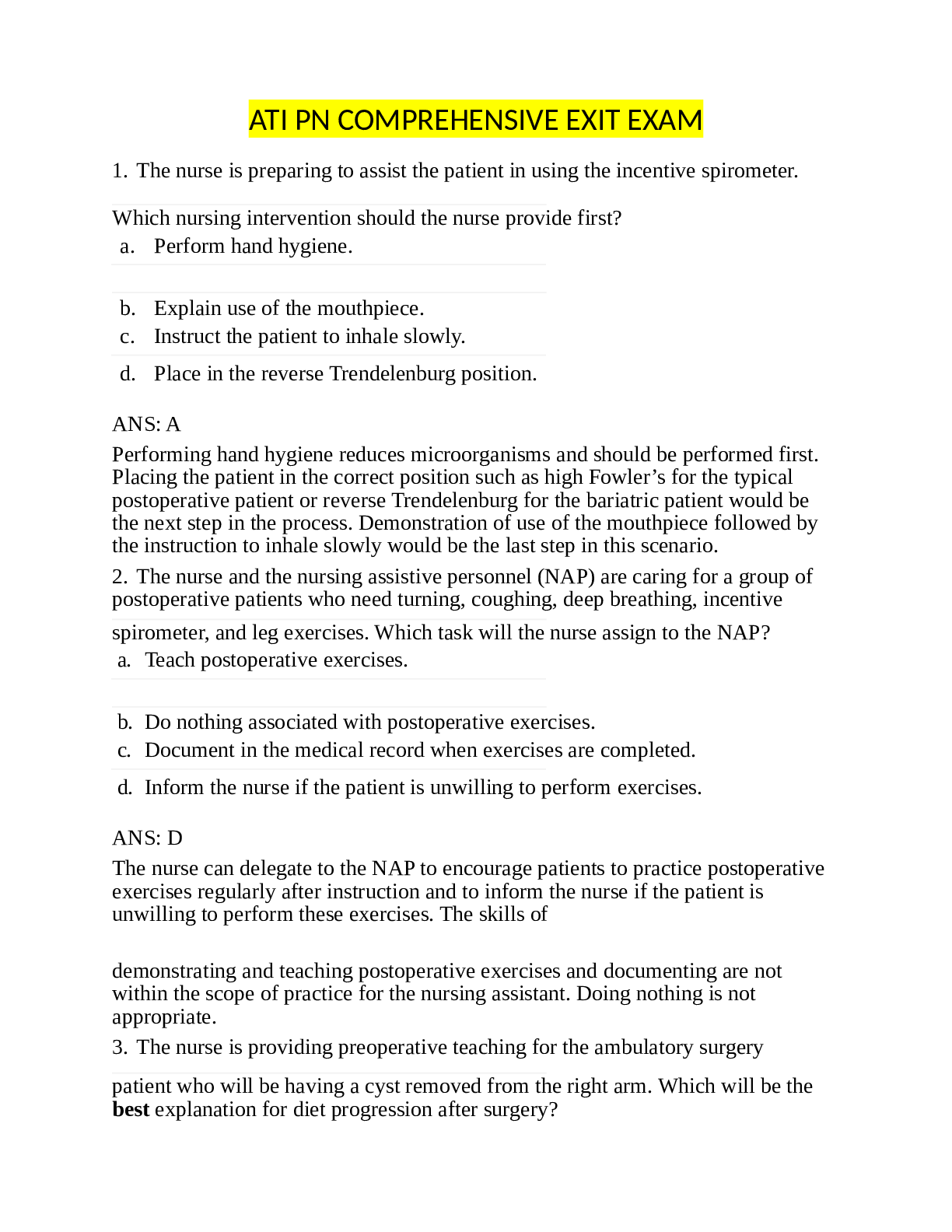

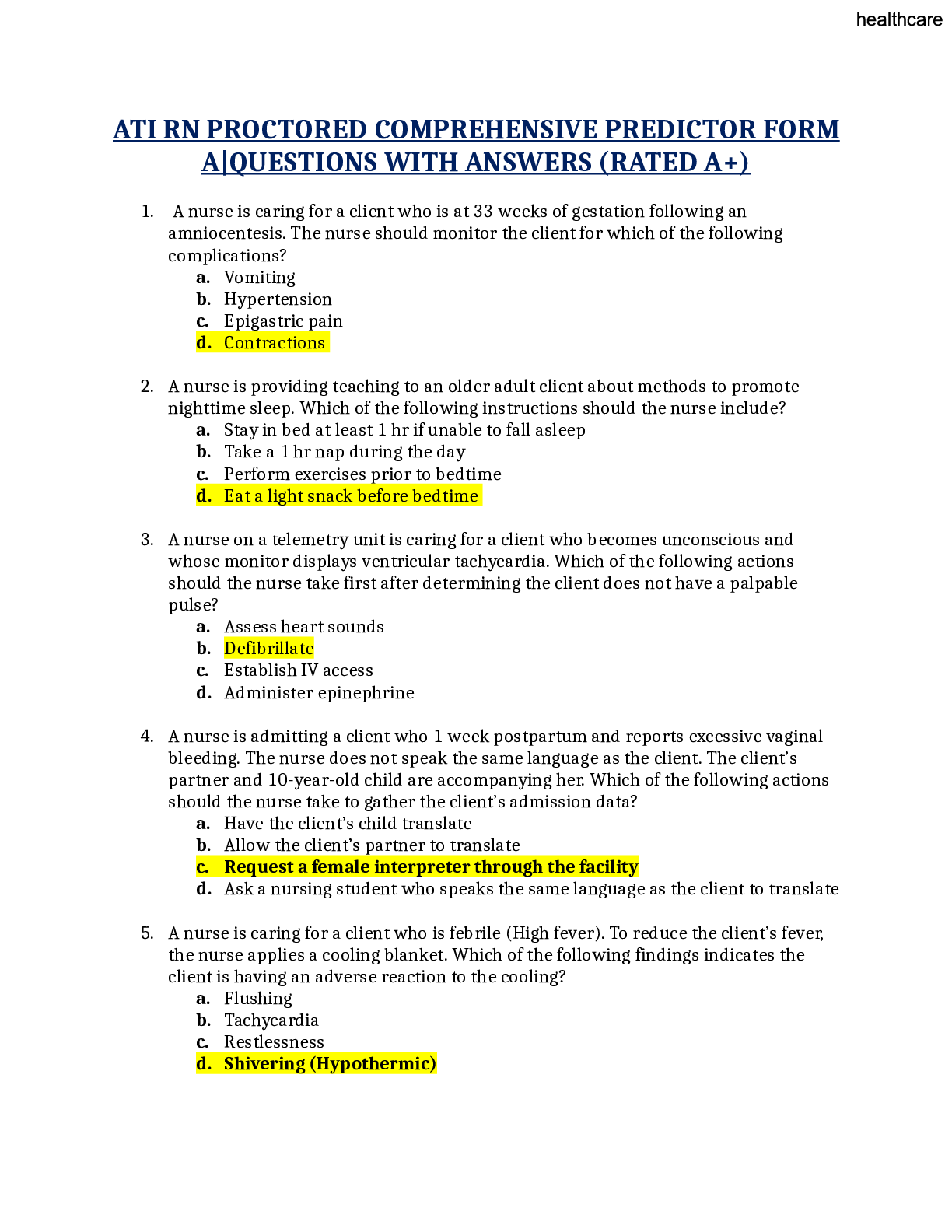

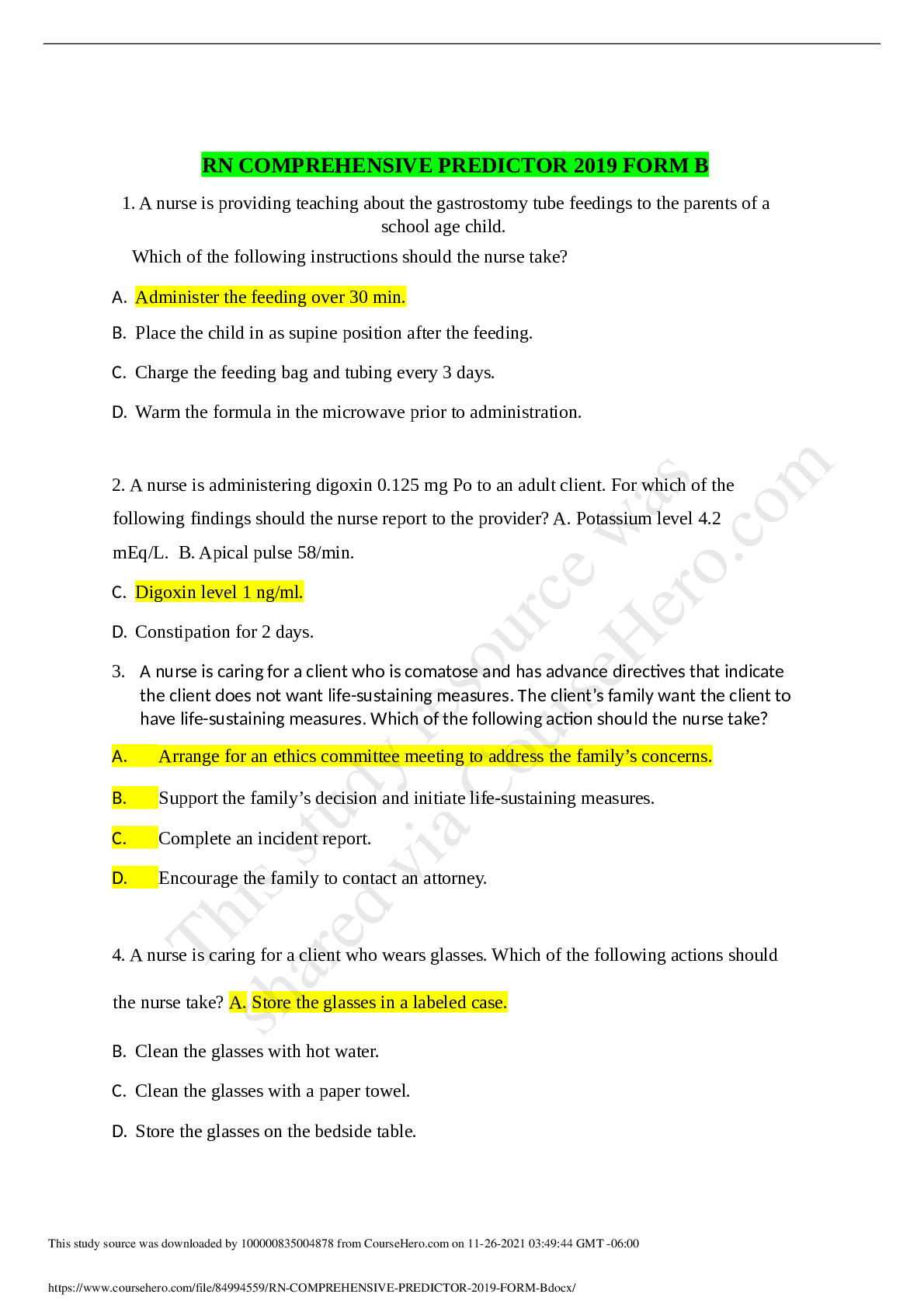
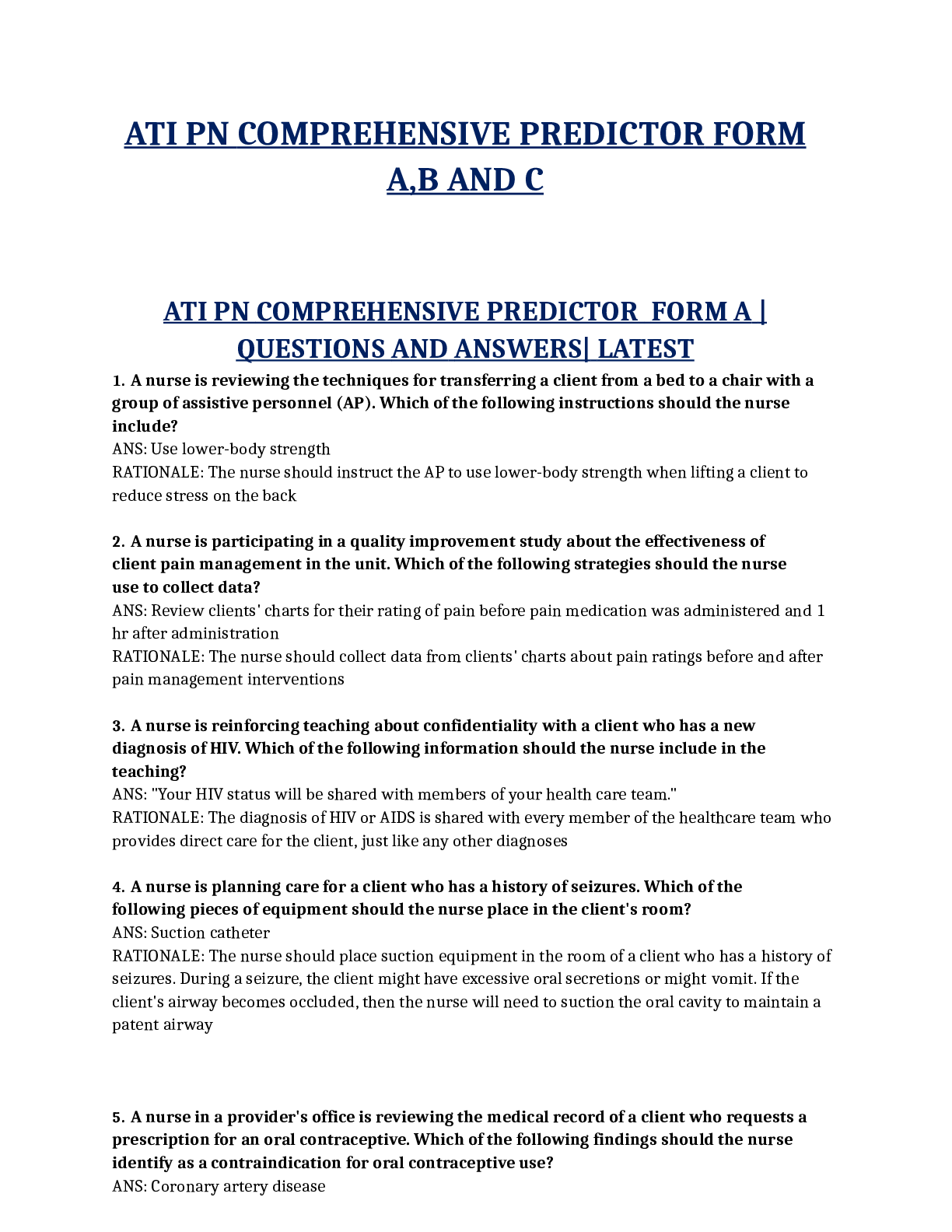


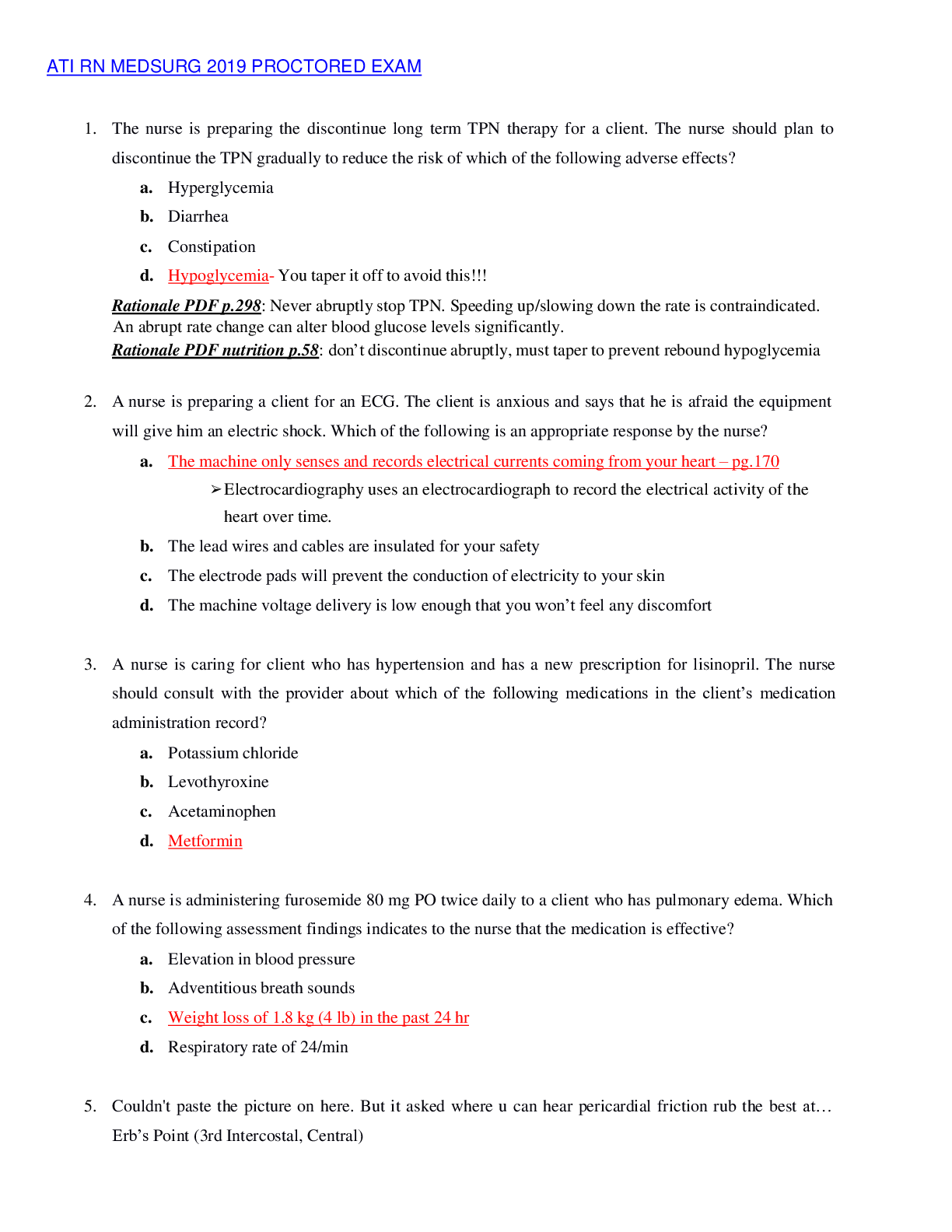
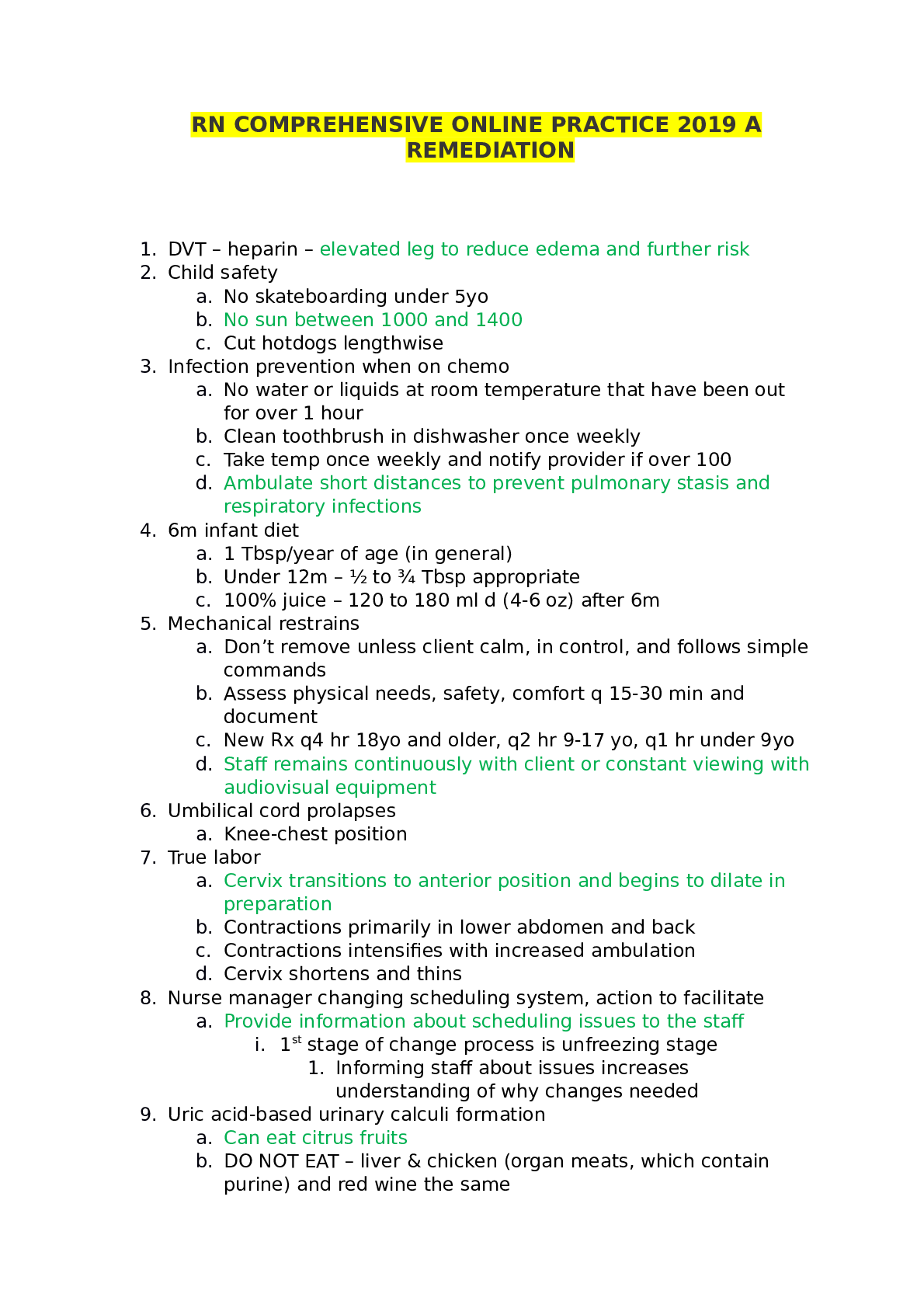

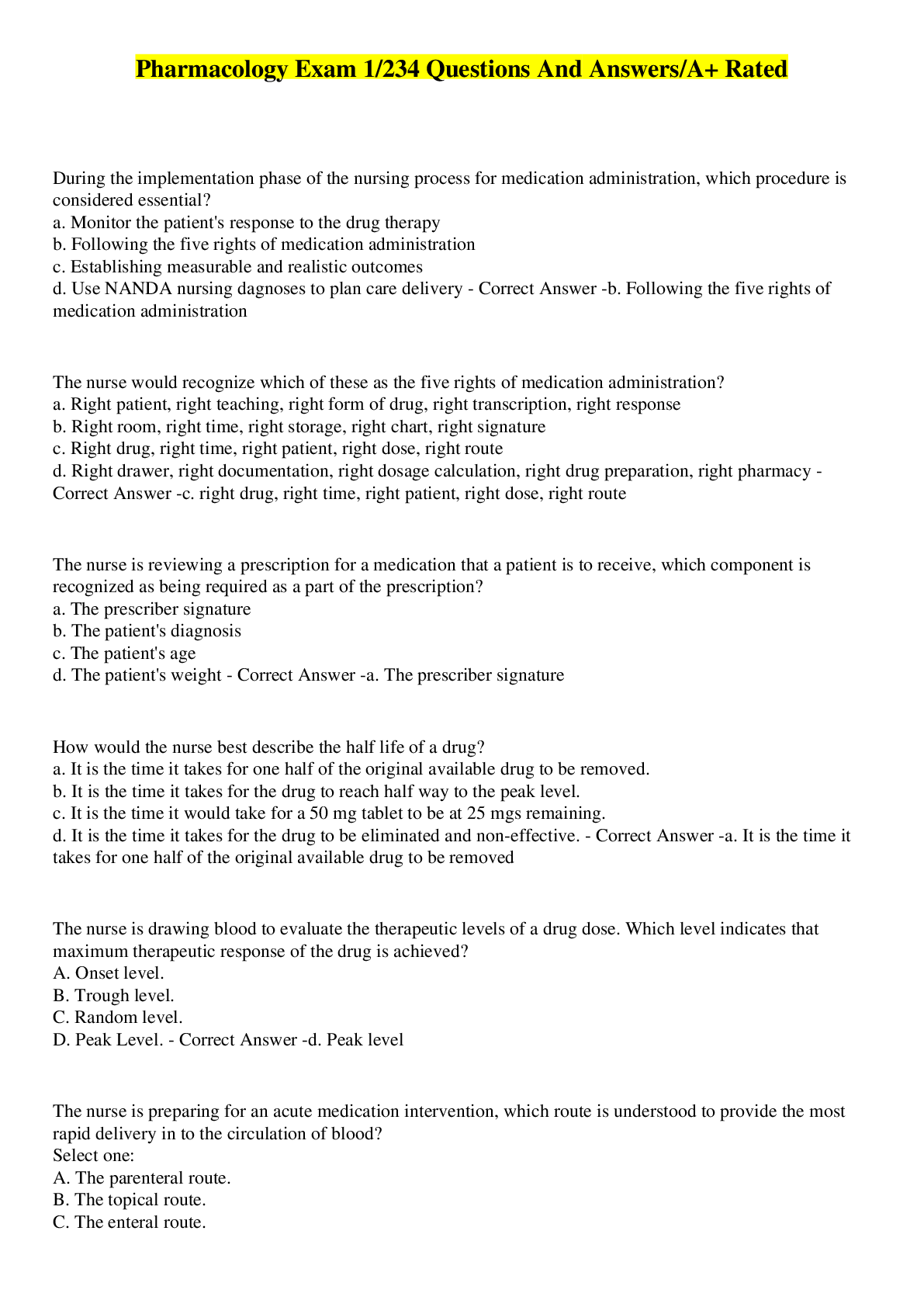





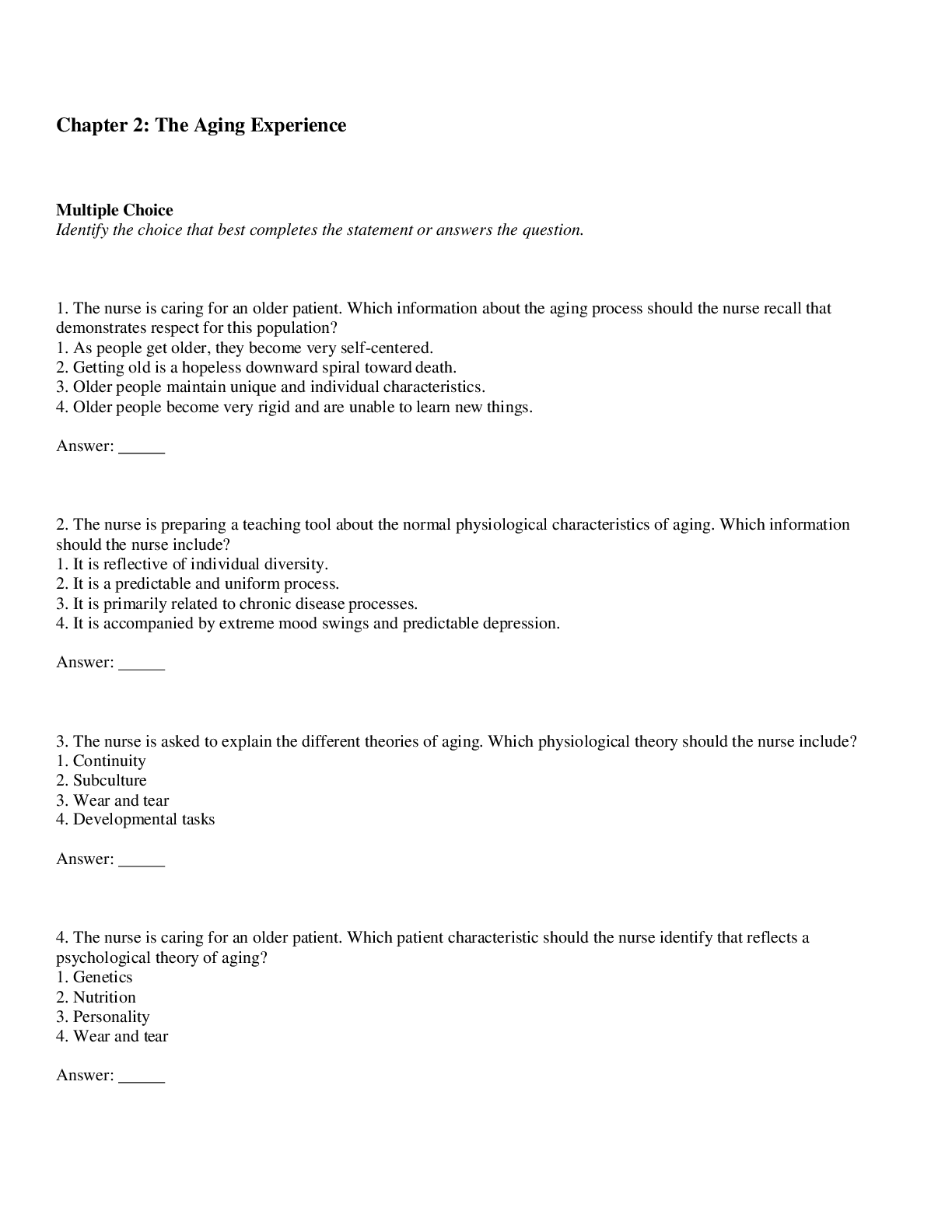
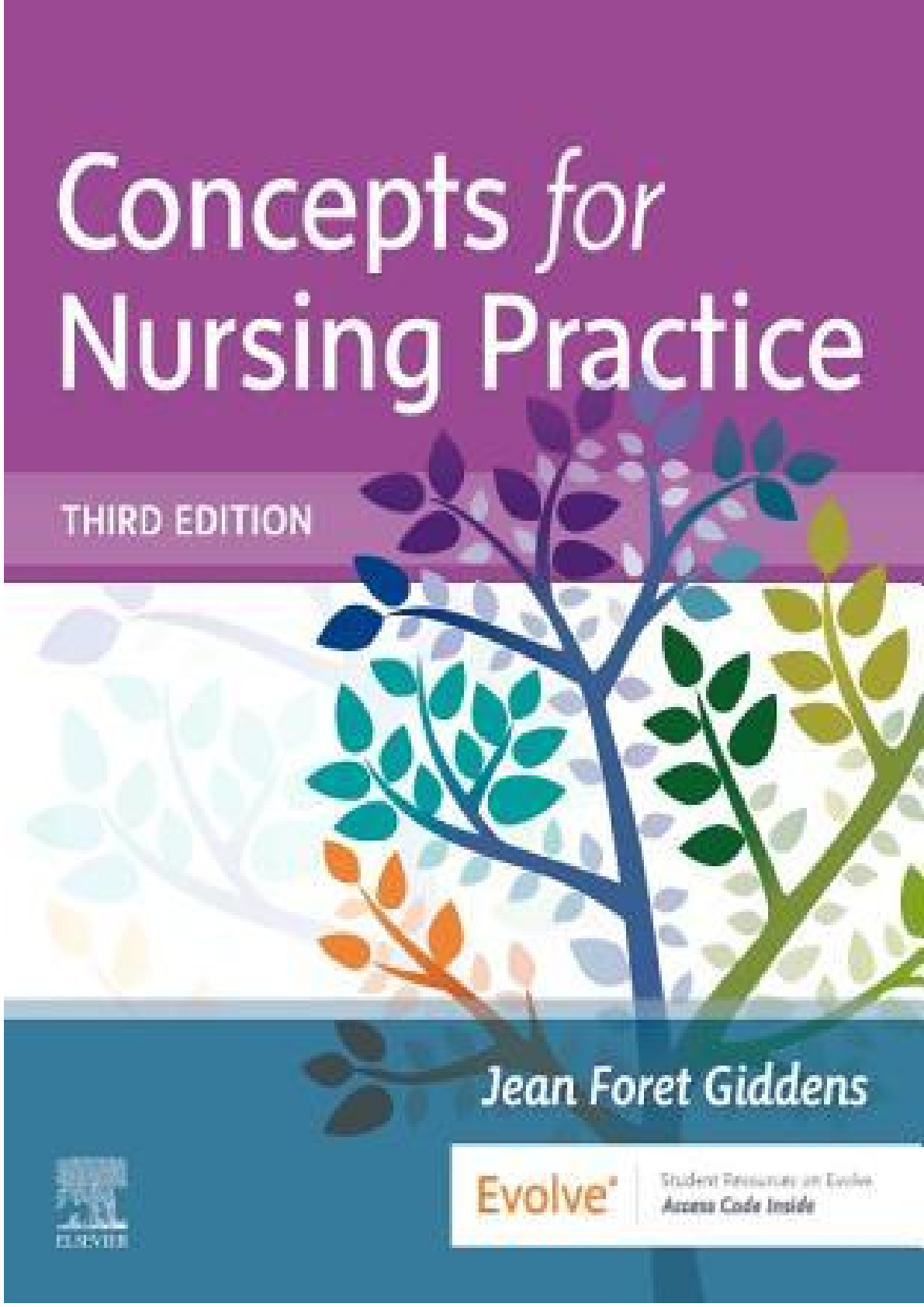


 (1).png)

